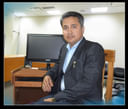Articulation Disorder and Treatment
When a child has difficulty forming sounds it may affect their development and other aspects of their lives. For example, a child with an articulation error may have difficulty completing schoolwork or interacting socially with their peers. This is where articulation therapy comes into play. The goal of articulation therapy is to help a child produce challenging sounds and achieve age-appropriate speech.
Proper articulation helps children
Let's start with a definition of articulation. Articulation is the process of physically producing a sound, syllable, or word. This is accomplished by using the lips, tongue, teeth, jaw, and palate to control the flow of air. Articulation errors come in four varieties: substitution, omission, distortion and addition; the acronym soda may help you remember them.
Substitution occurs when one sound is replaced with another, such as sorry/sowwy. In very young children, this isn't always a cause for concern. Omission is the removal of a difficult sound when forming a word. Think of dick van dyke's atrocious cockney accent from the movie, chitty chitty bang bang'ello guvnah! distortion errors occur when a child can't produce the correct sound; for example, children with a frontal lisp may have difficulty with the /s/ sound. An addition error involves the use of an incorrect sound or syllable, such as ending all words with an /s/ sound.
A key point in understanding articulation errors is their relationship to physiological, rather than psychological, issues. A child who has a rhotacism, or the inability to pronounce the letter /r/, understands how to pronounce the letter and sound, but has a physical impairment that prevents him or her from producing them correctly.



+1.svg)
